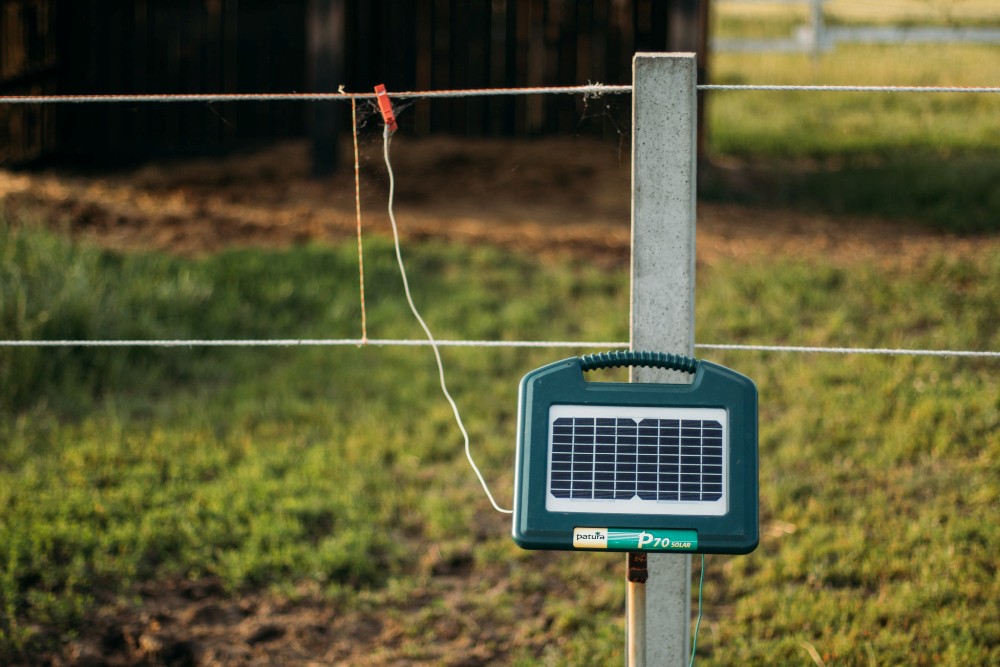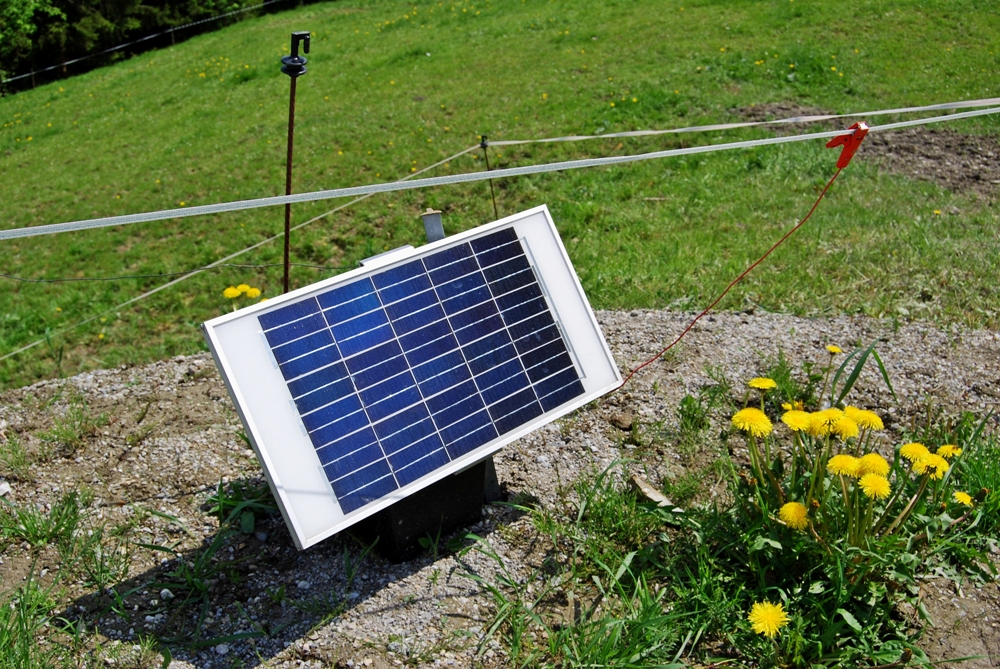
Discover how to install solar-powered electric fences efficiently to enhance security and sustainability. Solar-powered electric fence is an innovative solution that combines renewable energy with effective security measures. By harnessing the power of the sun, these systems offer a sustainable alternative to traditional electric fences while providing reliable protection for properties of all sizes.
Understanding the Solar Power Electric Fence
Solar-powered electric fence operates on the principle of converting solar energy into electricity to power the fence energizer. The energizer generates pulses of electric current that pass through the fence wires, creating a deterrent for intruders. These fences are commonly used to secure livestock, crops, and property boundaries in rural and remote areas. The key components of a solar-powered electric fence system include solar panels, an energizer, fence wires, insulators, grounding rods, and fence posts.
Assessing Your Property
Before installing a solar-powered electric fence, it’s essential to assess your property’s layout and fencing needs. Start by identifying the perimeter that requires fencing and any areas where additional security measures may be necessary. Consider factors such as the terrain, vegetation, and potential obstacles that could affect the installation process. Additionally, evaluate the sunlight exposure across different areas of your property to determine the optimal location for placing solar panels.
Selecting the Right Equipment
Choosing the right equipment is crucial for the successful installation and operation of a solar-powered electric fence. Begin by selecting high-quality solar panels with a sufficient wattage rating to meet your energy requirements. Opt for an energizer that matches the size of your fence and provides the necessary voltage to deter intruders effectively. Additionally, invest in durable fencing materials such as galvanized wire, sturdy posts, and insulators to ensure longevity and reliability.
Planning the Installation
Careful planning is essential to ensure the efficient and effective installation of a solar-powered electric fence. Start by mapping out the fence line and determining the placement of fence posts, solar panels, and wiring. Use a measuring tape and stakes to mark the location of each fence post, maintaining consistent spacing between them. Consider the angle and orientation of solar panels to maximize sunlight exposure throughout the day. Plan the layout of the wiring to ensure proper connections between components and minimize potential interference.
Installing Solar Panels
Proper installation of solar panels is critical for maximizing energy capture and ensuring the reliable operation of the electric fence system. Choose a location with maximum sunlight exposure, free from shading or obstruction. Securely mount the solar panels using mounting brackets or racks, ensuring stability and proper orientation towards the sun. Connect the solar panels to the energizer using suitable wiring and connectors, following manufacturer instructions carefully.
Setting Up the Energizer
The energizer is the heart of the solar-powered electric fence system, responsible for generating electric pulses to deter intruders. Begin by connecting the energizer to the solar panels and fence wires according to the manufacturer’s specifications. Install a grounding rod near the energizer to provide a path for excess electrical energy to dissipate safely. Test the energizer to ensure that it is receiving power from the solar panels and generating electric pulses along the fence wires.
Installing Fence Posts and Wiring
Proper installation of fence posts and wiring is essential for creating a sturdy and reliable perimeter. Use a post hole digger or auger to excavate holes for the fence posts, ensuring they are deep enough to provide stability. Insert the posts into the holes and backfill with soil or concrete to secure them in place. Attach insulators to the posts and run the fence wire through them, maintaining proper spacing and tension to prevent sagging or breakage.
Testing and Adjusting
Thorough testing and adjustment of the electric fence system are necessary to ensure proper functionality and effectiveness. Use a voltmeter or fence tester to measure the voltage along the fence wires, ensuring it meets the desired level for deterring intruders. Check for any breaks or weak spots in the wiring and repair them promptly to maintain the integrity of the fence. Adjust the sensitivity of the energizer as needed to optimize its performance and minimize false alarms.
Maintenance and Troubleshooting
Regular maintenance is essential for the continued operation and longevity of a solar-powered electric fence system. Clean the solar panels periodically to remove dirt, debris, and buildup that may reduce their efficiency. Inspect the connections between components and tighten any loose screws or bolts to ensure a secure fit. Monitor the performance of the energizer and replace any worn or damaged parts as needed. Conduct routine checks of the fence wires and insulators to identify any signs of wear or corrosion.
Expanding Your System
As your fencing needs evolve, you may choose to expand your solar-powered electric fence system to accommodate additional areas or assets. Consider adding more solar panels and energizers to increase the capacity and coverage of your fence. Extend the fence line to enclose larger areas or provide additional protection for specific assets. Incorporate wireless monitoring and control features to enhance security and convenience. Consult with a professional installer or supplier to determine the best approach for expanding your system while maintaining efficiency and effectiveness.
Conclusion
Installing a solar-powered electric fence requires careful planning, proper equipment, and attention to detail. By following this comprehensive guide, you can create a reliable and sustainable security solution for your property. Harnessing the power of the sun offers numerous benefits, including reduced reliance on grid electricity, lower operating costs, and minimal environmental impact. With proper installation, maintenance, and expansion, a solar-powered electric fence can provide long-term security and peace of mind for property owners.

FAQs
How does a solar-power electric fence work?
A solar-powered electric fence operates by harnessing sunlight through solar panels, which convert solar energy into electricity. This electricity powers the energizer, the central component of the system, which produces intermittent electric pulses. These pulses are transmitted through the fence wires, creating a psychological and physical deterrent for animals or intruders. The energizer ensures that the fence remains active even during periods of low sunlight, providing continuous protection.
What are the benefits of using solar power for electric fences?
Utilizing solar power for electric fences offers numerous advantages. Firstly, it reduces dependency on traditional grid electricity, making it a sustainable and environmentally friendly option. Solar energy is renewable and freely available, thereby lowering operating costs in the long run. Additionally, solar-powered electric fences can be installed in remote or off-grid locations where access to electricity is limited or nonexistent. Moreover, by utilizing solar power, property owners can contribute to reducing carbon emissions and mitigating their environmental footprint.
Can I install a solar-powered electric fence myself?
While DIY installation is feasible for some individuals with the necessary skills and knowledge, seeking professional assistance is recommended, particularly for more complex setups. Professional installers have expertise in designing and implementing electric fence systems, ensuring they are installed correctly and operate efficiently. They can also provide valuable insights into optimizing the system’s performance and addressing any potential challenges or safety concerns.
Are solar-powered electric fences suitable for all types of properties?
Yes, solar-powered electric fences are adaptable to a wide range of properties and applications. Whether you own a farm, ranch, residential property, or remote area, solar-powered electric fences can be customized to meet your specific security needs. These fences are particularly beneficial for properties located in rural or off-grid locations where access to traditional power sources may be limited. Additionally, solar-powered electric fences are versatile and scalable, allowing for easy expansion or modification to accommodate evolving requirements.
How long do solar-powered electric fences last?
With proper maintenance and care, solar-powered electric fences can have a long lifespan, providing reliable security for many years. Routine inspections, cleaning, and maintenance are essential to ensure the system operates efficiently and remains in good condition. Additionally, using high-quality components and materials during installation can contribute to the longevity of the fence. While individual components may require periodic replacement due to wear and tear, a well-maintained solar-powered electric fence can offer durable and effective security for property owners.
